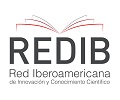DETERMINATION OF THE EFFECTIVE CONCENTRATION 50, 90 AND 99 OF IVERMECTIN AGAINST A STRAIN OF COMMON BOVINE TICK (Rhipicephalus (boophilus) microplus) IN THE PROVINCE OF SANTA FE-ARGENTINA
DOI:
https://doi.org/10.14409/favecv.v19isuplemento.10944Keywords:
Rhipicephalus microplus, larval immersion test, ivermectin, tick control.Abstract
The aim of this study was to obtain the sensitivity data of the native strains of R. microplus to ivermectin (IVM) in the province of Santa Fe-Argentina, in order to detect the emergence of resistant strains. Native (field isolation) and susceptible (reference) larvae of R. microplus were treated with increasing concentrations of IVM in order to determine its efficacy at different doses. The statistical treatment of the concentration-efficacy curves was performed by the PROBIT model, who is a standardized method proposed by FAO. The results obtained indicated that the larvae isolated were susceptible, being the values of LD50 (9.66 ppm) and LD90 (17.41 ppm), which were lower than those of the reference strain (LD50:13.58 ppm, LD90:19.31 ppm), and the RR (resistance ratio) were less than one (RR50: 0.711; RR90: 0.901). The DL99 (51.48 ppm) was only obtained in the reference strain to determine the discriminant dose (DL99x2), which is a parameter that could be used to easily discriminate susceptible and resistant larvae populations.
Downloads
Published
How to Cite
Issue
Section
License
FAVE Sección Ciencias Veterinarias ratifies the open access model, in which contents (in full) are available free to anyone in the internet. The costs of production and publication are not transfered to the authors. This policy intends to break social and economical barriers that generate inequities in the access to information, and for the publication of research results.
All articles can be accessed at http://bibliotecavirtual.unl.edu.ar/publicaciones/index.php/FAVEveterinaria/issue/current/, under license Creative CommonsAtribución-NoComercial-Compartir Igual 4.0 Internacional.










